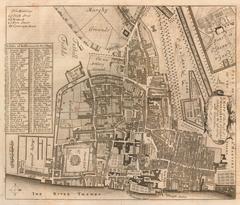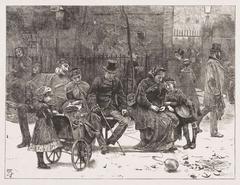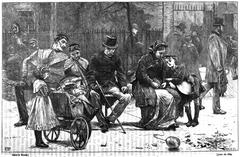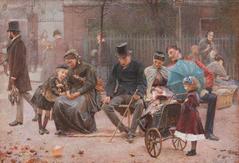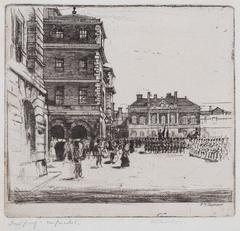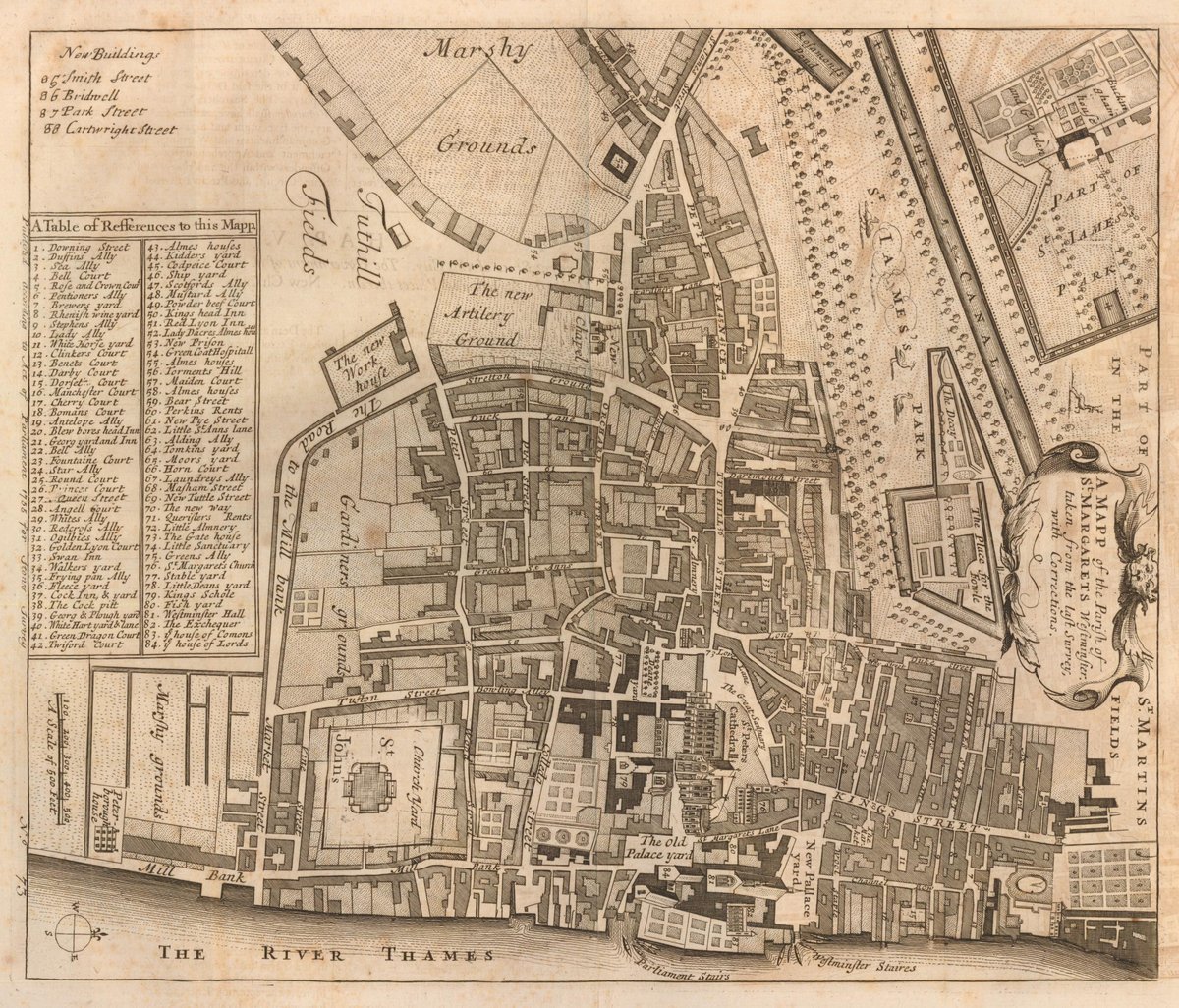
St James’s Park London: Visiting Hours, Tickets, and Historical Sites Guide
Date: 14/06/2025
Introduction
St James’s Park, the oldest of London’s Royal Parks, lies at the heart of the city and offers an enchanting blend of lush landscapes, vibrant wildlife, and historical significance. Its proximity to iconic sites—such as Buckingham Palace, Westminster, and The Mall—makes it a must-visit for both history enthusiasts and casual visitors. From its medieval beginnings as a leper hospital, through Tudor and Stuart transformations, to its current romantic landscape designed by John Nash, the park is a living testament to British heritage. This detailed guide covers everything you need to know: visiting hours, accessibility, historical highlights, key attractions, and practical tips to ensure a fulfilling visit (Royal Parks, Britain Express, Grafting Gardeners, tourbytransit.com, Time Out).
Table of Contents
- Introduction
- Visiting Information
- Historical Overview
- Key Attractions
- Things to Do
- Practical Tips
- Nearby Landmarks
- Frequently Asked Questions (FAQ)
- Conclusion & Call to Action
- References
Visiting Information
Opening Hours & Admission
- Hours: Daily, 5:00 a.m. to midnight.
- Admission: Free for all visitors.
- Entrances: Main gates from The Mall (near Buckingham Palace), Horse Guards Road, and Birdcage Walk. All are wheelchair-accessible.
Accessibility & Facilities
- Paths: Mostly flat and paved, suitable for wheelchairs and strollers.
- Restrooms: Available near the café and Marlborough Gate, with accessible and baby-changing facilities.
- Wi-Fi: Free public Wi-Fi near main gathering areas.
- Picnicking: Allowed on lawns; gourmet supplies available from nearby shops (British Heritage).
Getting There
- Underground: St. James’s Park (District & Circle), Green Park, Westminster, and Charing Cross stations all within a 5–10 minute walk.
- Bus: Routes 11, 24, 148, 211, and others.
- Train: Charing Cross and Victoria are mainline options nearby.
- Parking: No on-site parking; use public transport or nearby car parks.
Events & Guided Tours
- Royal Events: Trooping the Colour, Changing of the Guard, and state processions.
- Guided Walks: History and nature tours, with special workshops and educational activities for families (Royal Parks Events).
- Bandstand Events: Live music in summer.
Top Photo Spots
- Blue Bridge: Iconic views of Buckingham Palace, Horse Guards Parade, and the London Eye.
- Flowerbeds: Renowned for vibrant displays in spring and summer.
- Wildlife: Pelican feeding at 2:30 p.m. daily.
Historical Overview
Medieval Origins
- 13th Century: Site of a leper hospital for women, dedicated to St. James the Less. The area was marshland, later giving its name to the park (Royal Parks).
Tudor and Stuart Transformations
- 1532: Henry VIII acquires the land, transforms it into a deer park, and constructs St. James’s Palace (Britain Express).
- Early 1600s: James I drains marshes, introduces a royal menagerie with exotic animals, and begins formal landscaping. Attempts silk production with mulberry trees (Grafting Gardeners).
- Restoration (1660): Charles II, influenced by Versailles, commissions French landscaper André Mollet for a Baroque redesign featuring grand canals and avenues. The park opens to the public and becomes a fashionable promenade (Britain Express).
Baroque Redesign & Nash’s Vision
- 1820s: George IV commissions John Nash, who softens formal layouts into winding paths, adds the picturesque lake, and creates today’s romantic landscape (Britain Express).
Modern Heritage & Conservation
- 20th–21st Centuries: The park is a Grade I listed landscape, home to over 1,250 trees and more than 40 species of waterfowl. Conservation efforts focus on ecology and habitat preservation (Grafting Gardeners).
Key Attractions
Duck Island & Pelican Colony
- Duck Island: Created in the 17th century as a waterfowl reserve, featuring the Swiss-style Duck Island Cottage.
- Pelicans: Introduced in 1664 as a diplomatic gift; daily feedings are a highlight for visitors (Royal Parks).
The Mall & Ceremonial Events
- The Mall: Grand avenue for royal processions, including the Changing of the Guard and Trooping the Colour. The Victoria Memorial marks the transition to Buckingham Palace (Britain Express).
- Horse Guards Parade: Historic site for state and military ceremonies.
Monuments & Memorials
- Queen Mother Statue: Near Marlborough Gate.
- Guards Memorial: Honoring fallen soldiers.
- Royal Artillery South Africa Memorial: Commemorates the Boer Wars.
- Upcoming: Queen Elizabeth II Memorial (planned for 2026), adding to the park’s rich commemorative landscape (bbc.co.uk; dailyrecord.co.uk).
Things to Do
Wildlife Watching
- Birdlife: Pelicans, swans, ducks, geese, and songbirds thrive in the lake and gardens.
- Conservation Areas: Duck Island serves as a sanctuary; wildflower meadows and reed beds support biodiversity.
Picnics & Walks
- Picnic Lawns: Perfect for relaxation, with scenic views and ample benches.
- Walking/Jogging: Flat paths suitable for all ages; the main circuit is about 1.5 km.
Events & Activities
- Guided Tours: Book nature or history walks through the Royal Parks (Royal Parks Events).
- Children’s Playground: Modern play area near Horse Guards Parade.
- Seasonal Highlights: Cherry blossoms in spring, summer concerts, autumn foliage, and winter tranquility.
Practical Tips
- Best Time to Visit: Early morning or late evening for fewer crowds and better light.
- Pelican Feeding: Arrive by 2:30 p.m. near Duck Island Cottage.
- Wildlife Etiquette: Do not feed birds; maintain a respectful distance.
- Cycling: Not permitted inside the park; bike racks provided at entrances.
- Dogs: Allowed but must be leashed near lakes and wildlife zones.
- Accessibility: Main paths and facilities accommodate wheelchairs and strollers.
Nearby Landmarks
- Buckingham Palace: Western edge of the park, open for tours in summer.
- Westminster Abbey & Houses of Parliament: Short walk to the southeast.
- Trafalgar Square & The Mall: Northeast, leading to the National Gallery.
- The Green Park & Hyde Park: Easily accessible via connecting paths.
Frequently Asked Questions (FAQ)
Q: What are St. James’s Park’s opening hours?
A: Daily from 5:00 a.m. to midnight.
Q: Is entry free?
A: Yes, there is no admission fee.
Q: When is pelican feeding?
A: Daily between 2:30–3:00 p.m., near Duck Island Cottage.
Q: Is the park wheelchair accessible?
A: Yes, with paved paths and accessible restrooms.
Q: Can I bring my dog?
A: Yes, but dogs must be on a lead near wildlife areas.
Q: How do I book tours?
A: Via the Royal Parks events page.
Conclusion & Call to Action
St. James’s Park is the embodiment of London’s royal and natural heritage—offering free entry, scenic walks, rich wildlife, and a front-row seat to British pageantry. Its central location, accessible amenities, and year-round events make it a perfect destination for visitors of all ages and interests. To stay updated on park events, guided walks, and travel tips, download the Audiala app, explore our related articles, and follow The Royal Parks on social media. Plan your visit and discover the living history at the heart of London.
References
- This is a sample text. (Britain Express)
- This is a sample text. (Royal Parks)
- This is a sample text. (tourbytransit.com)
- This is a sample text. (Grafting Gardeners)
- This is a sample text. (Time Out)
- This is a sample text. (bbc.co.uk)
- This is a sample text. (dailyrecord.co.uk)
